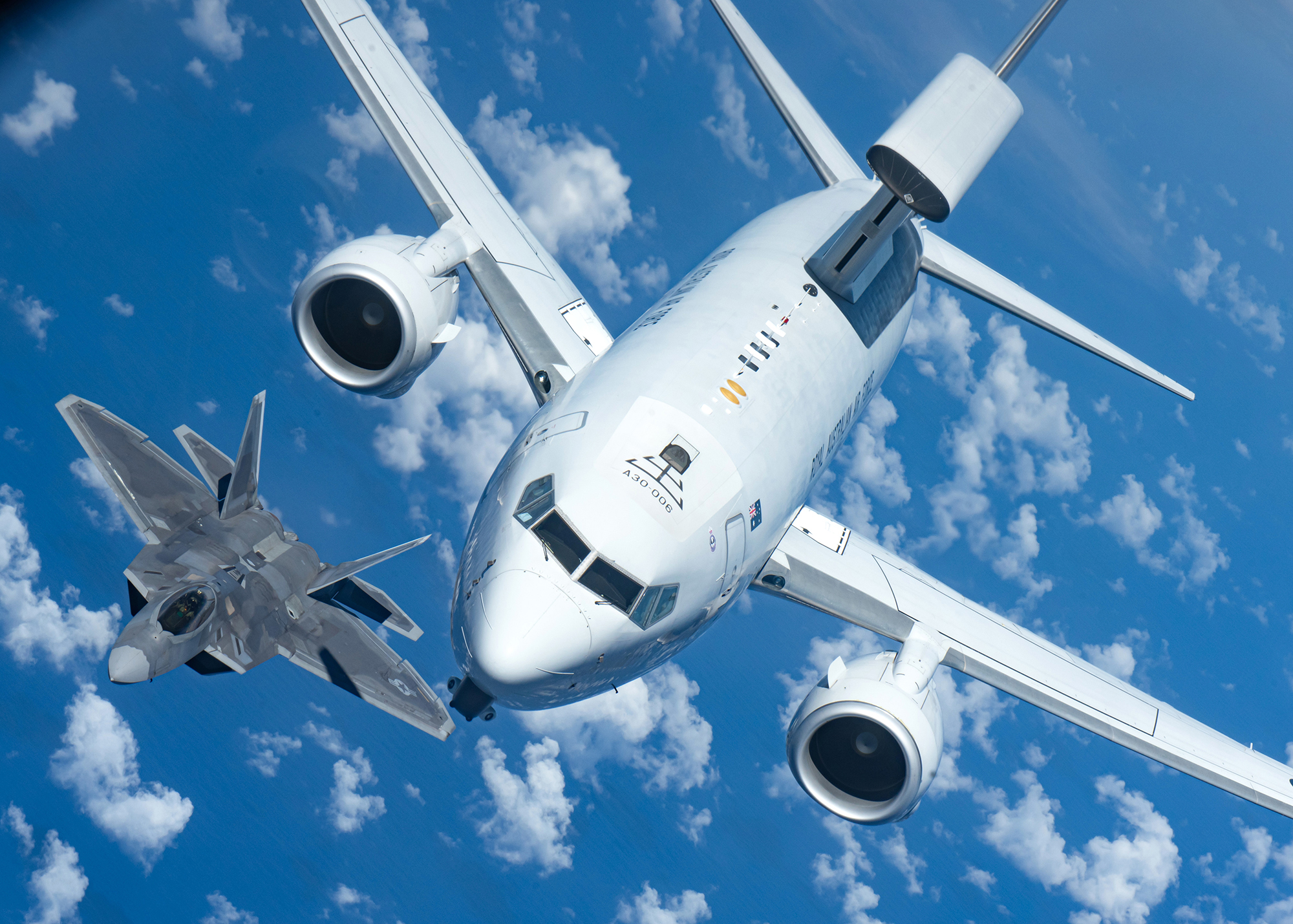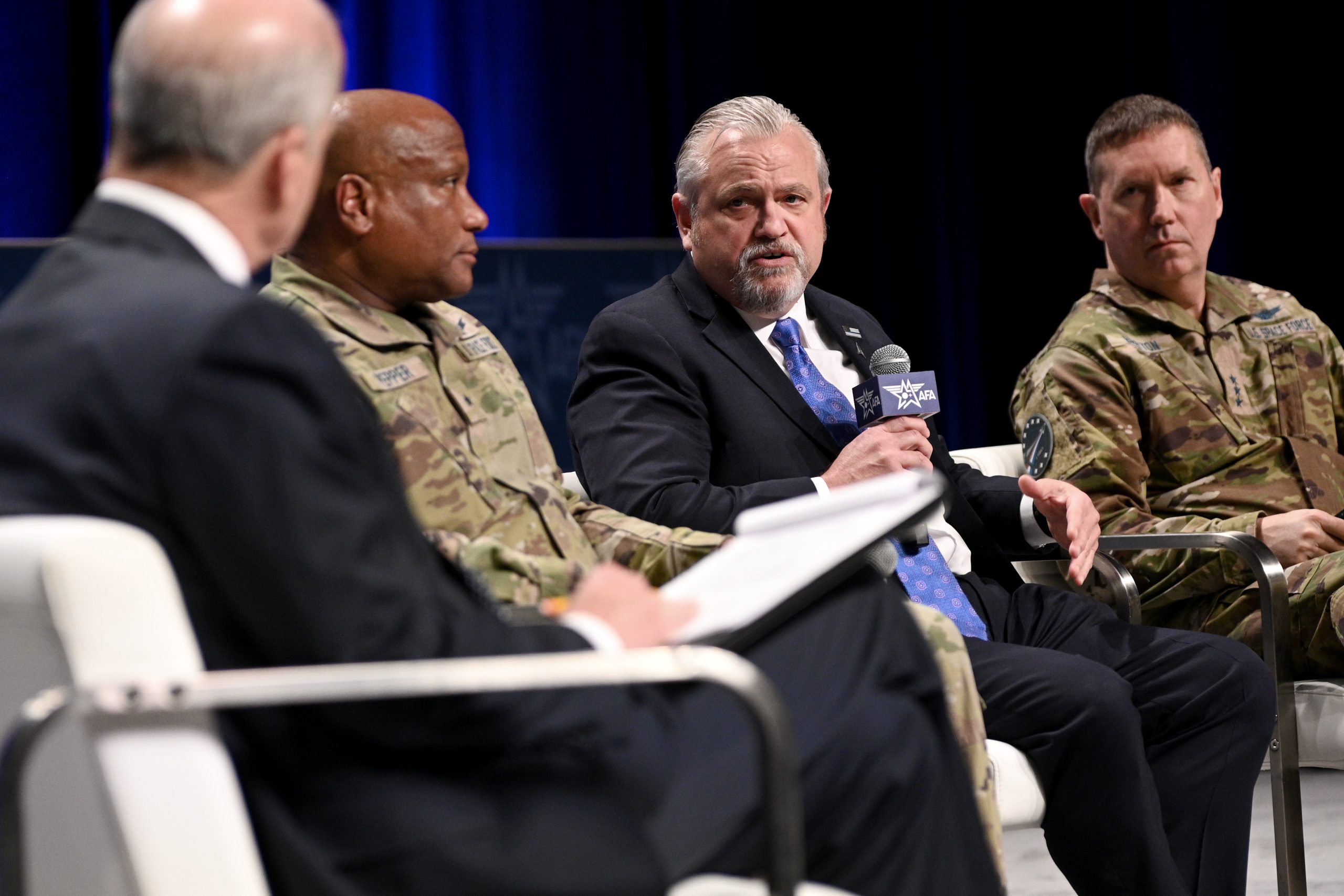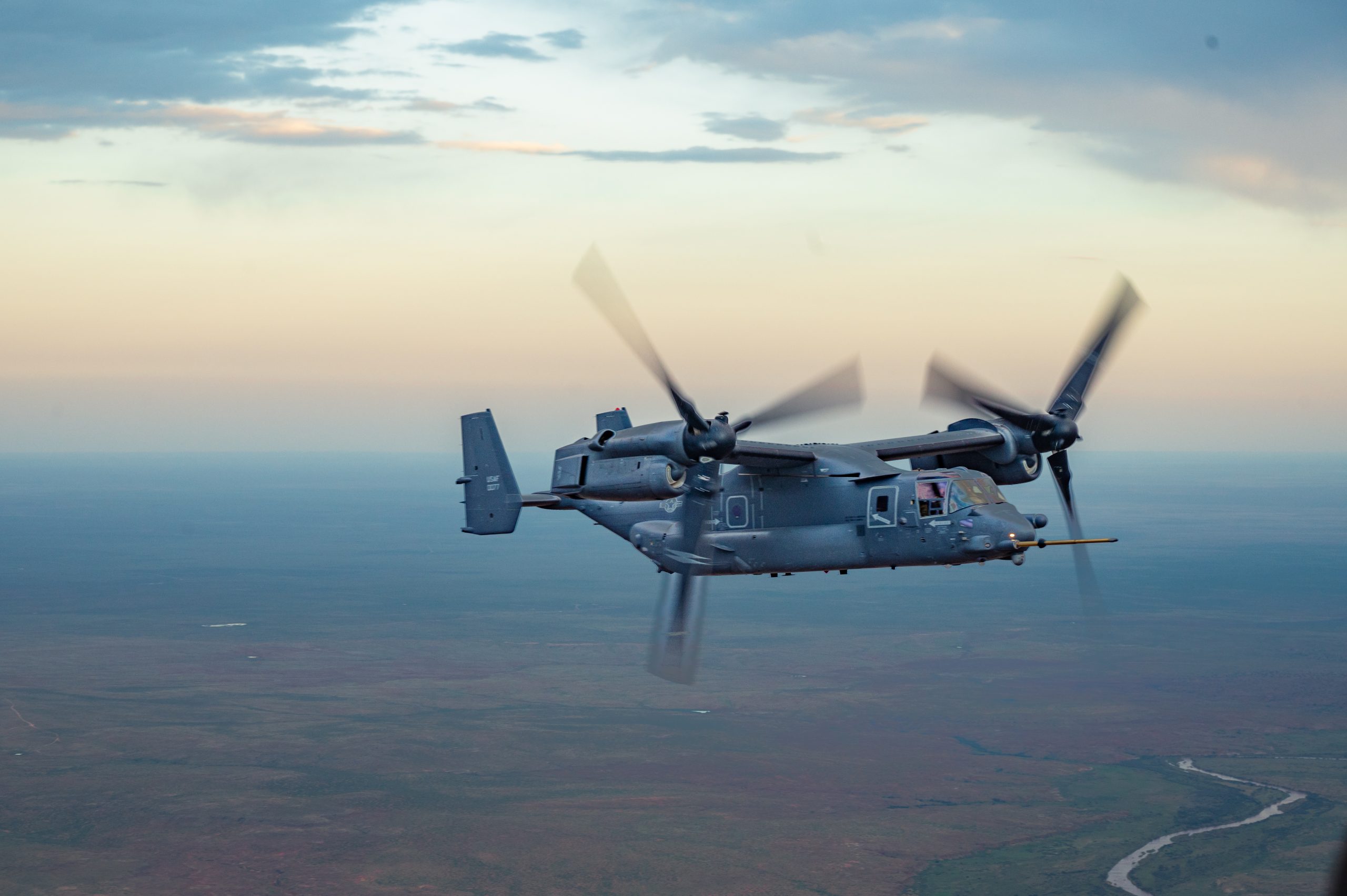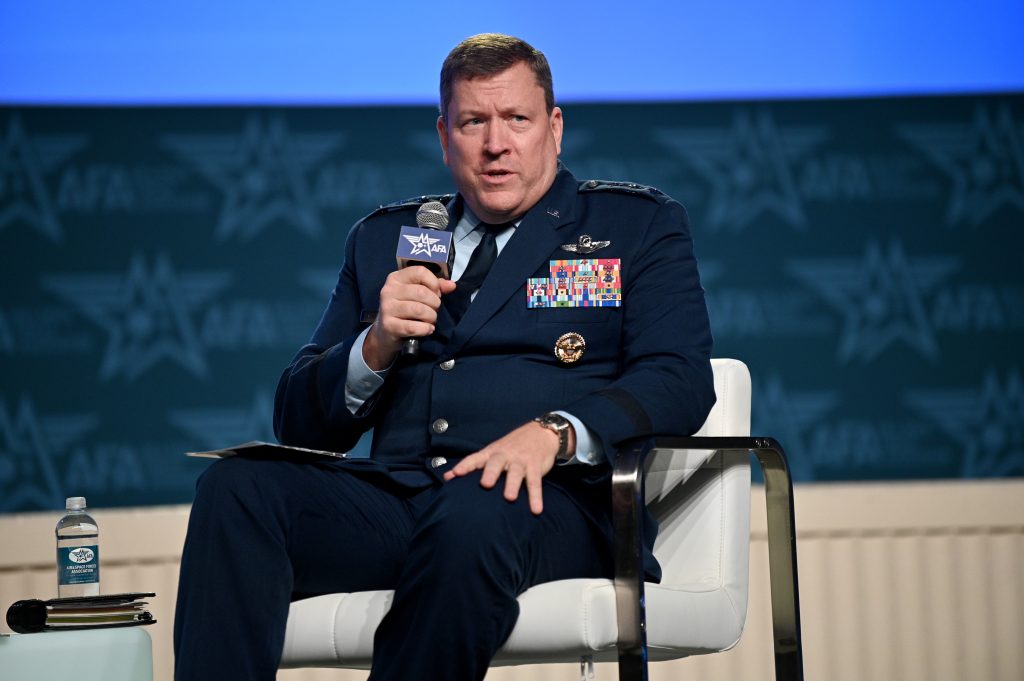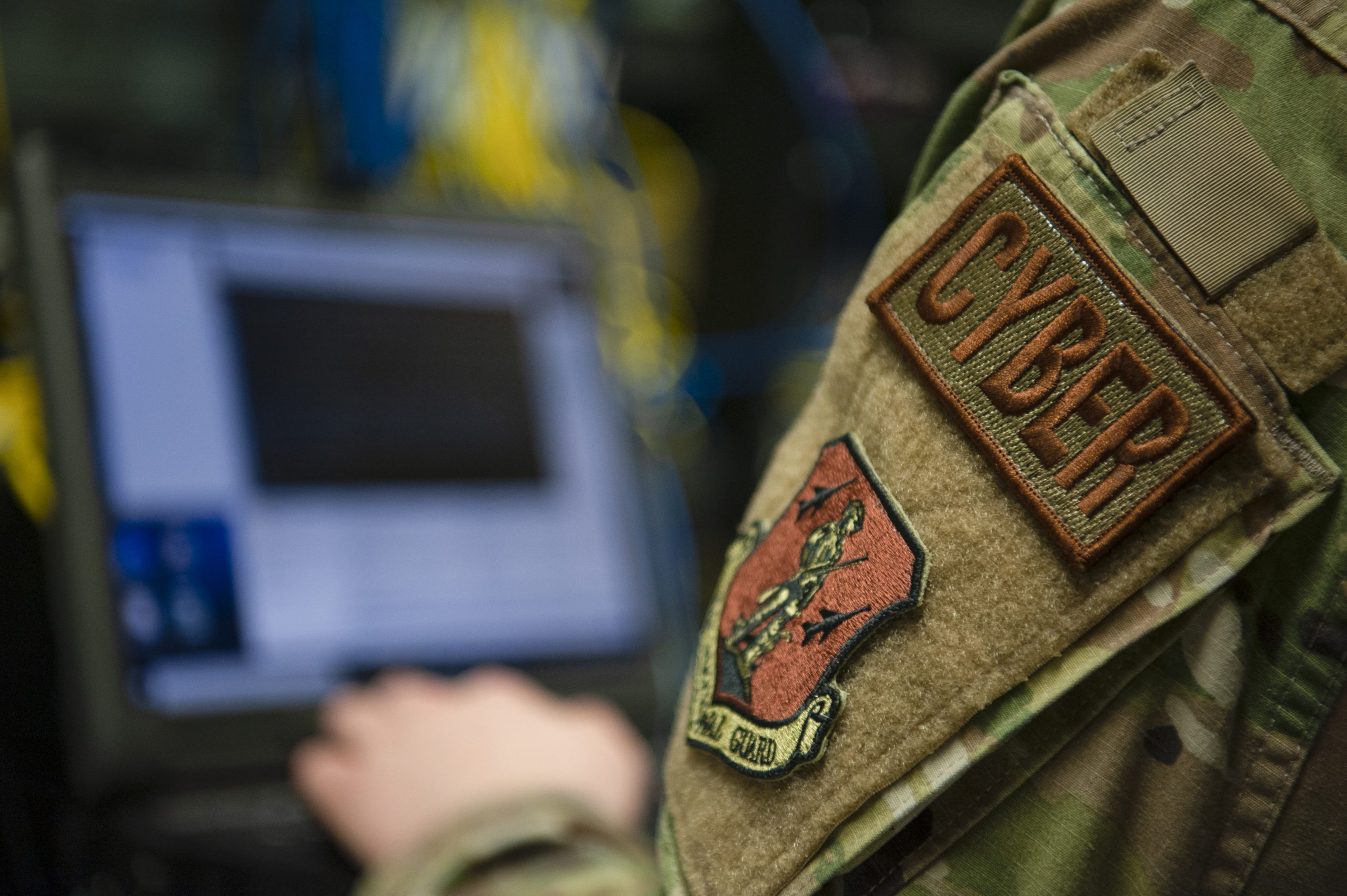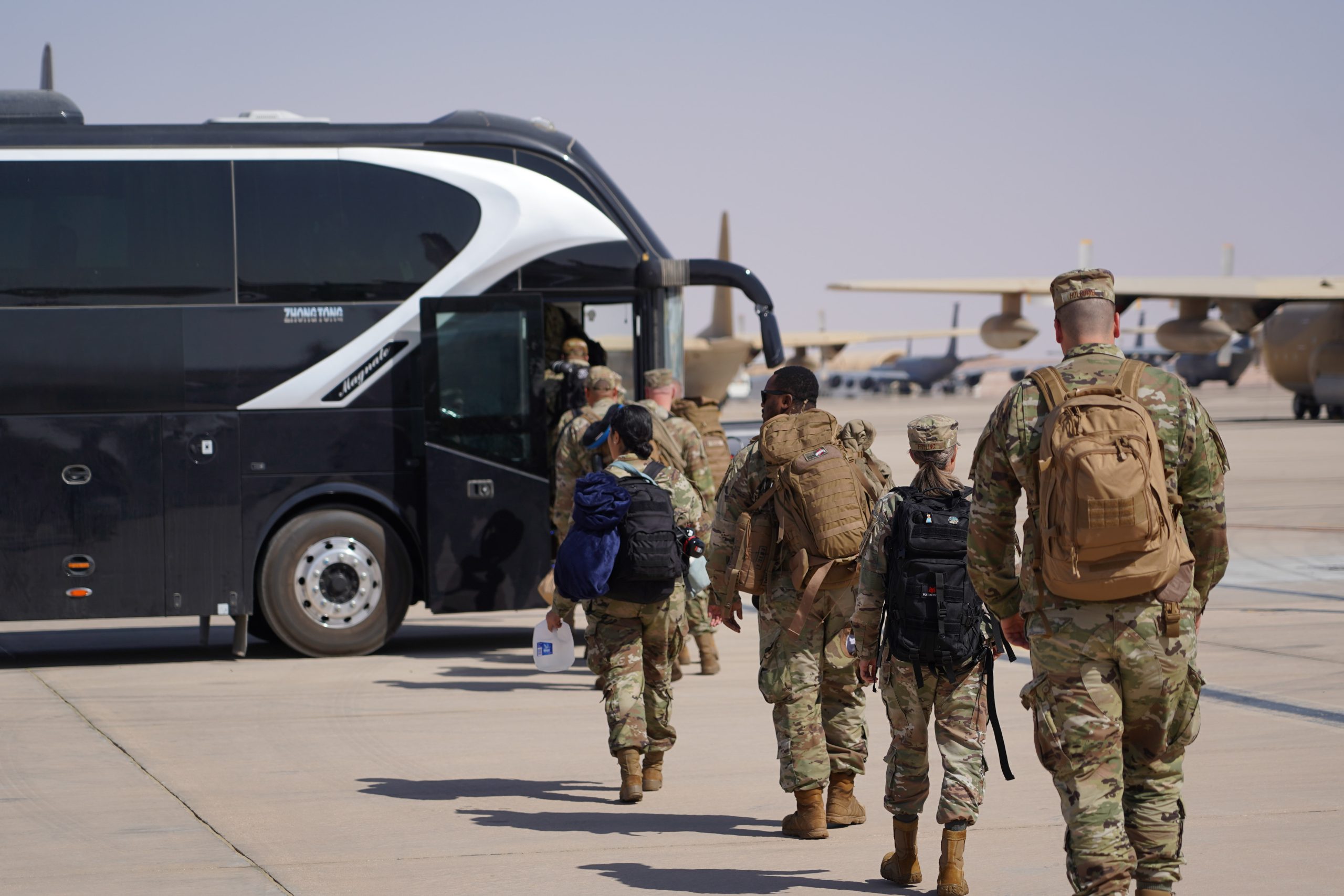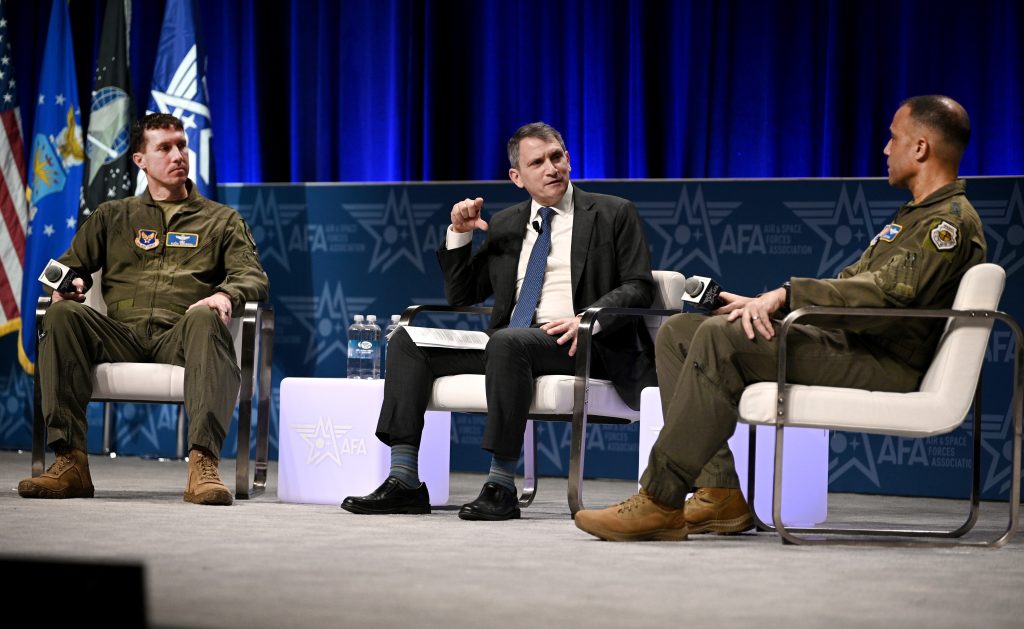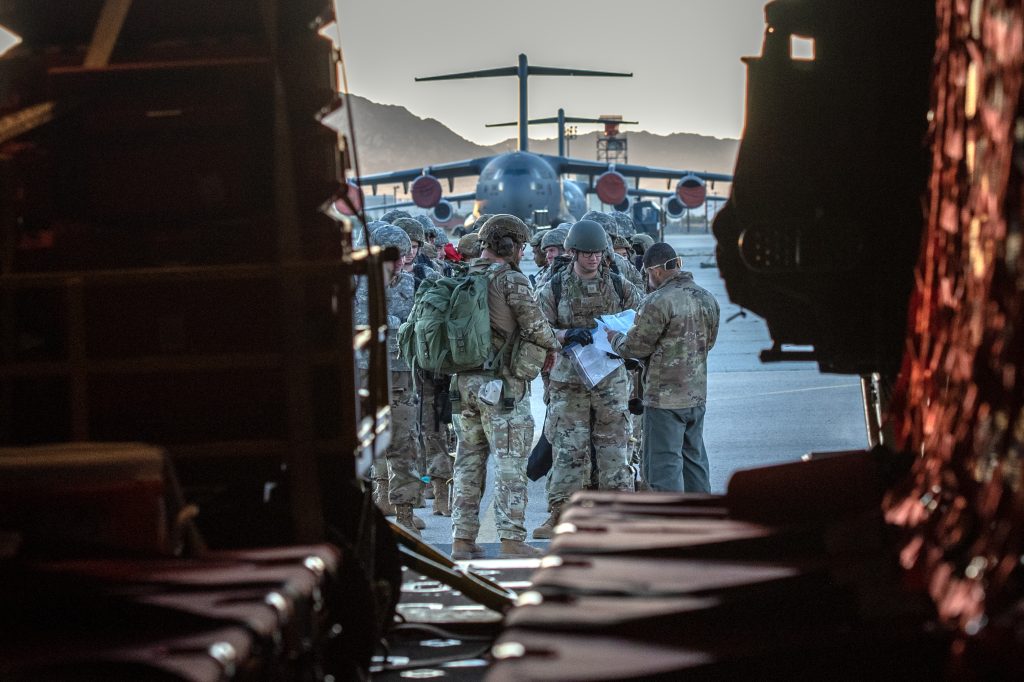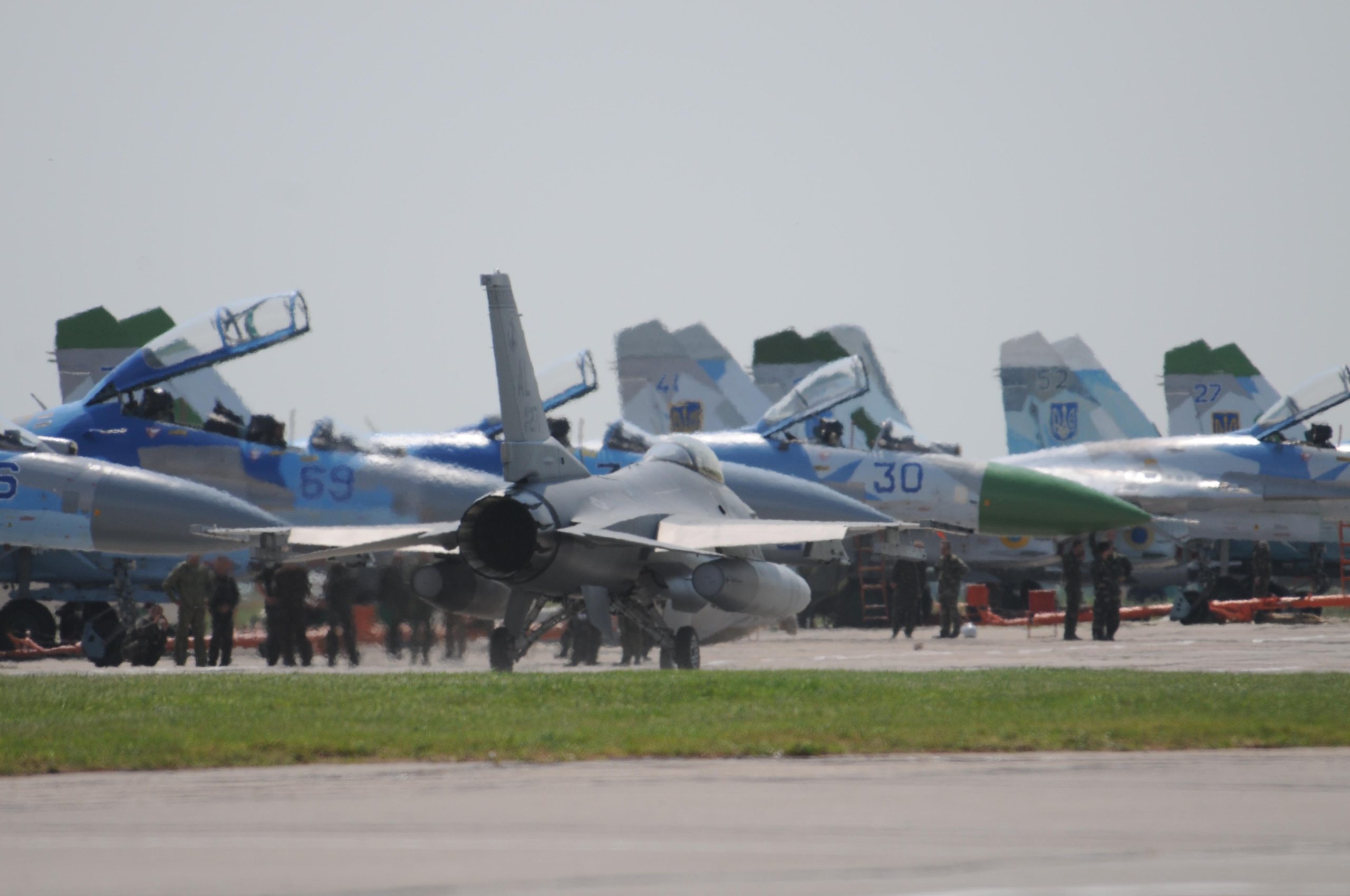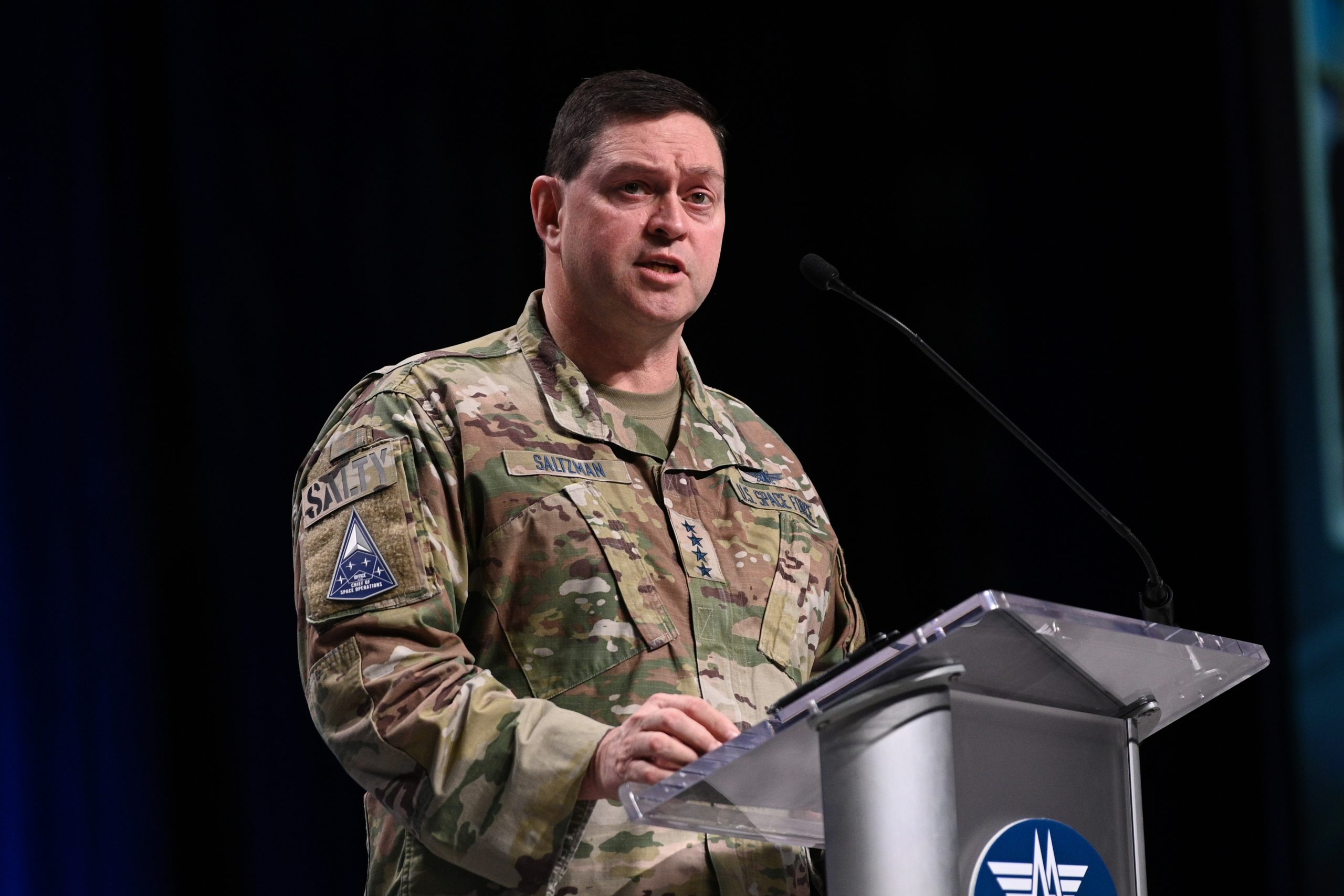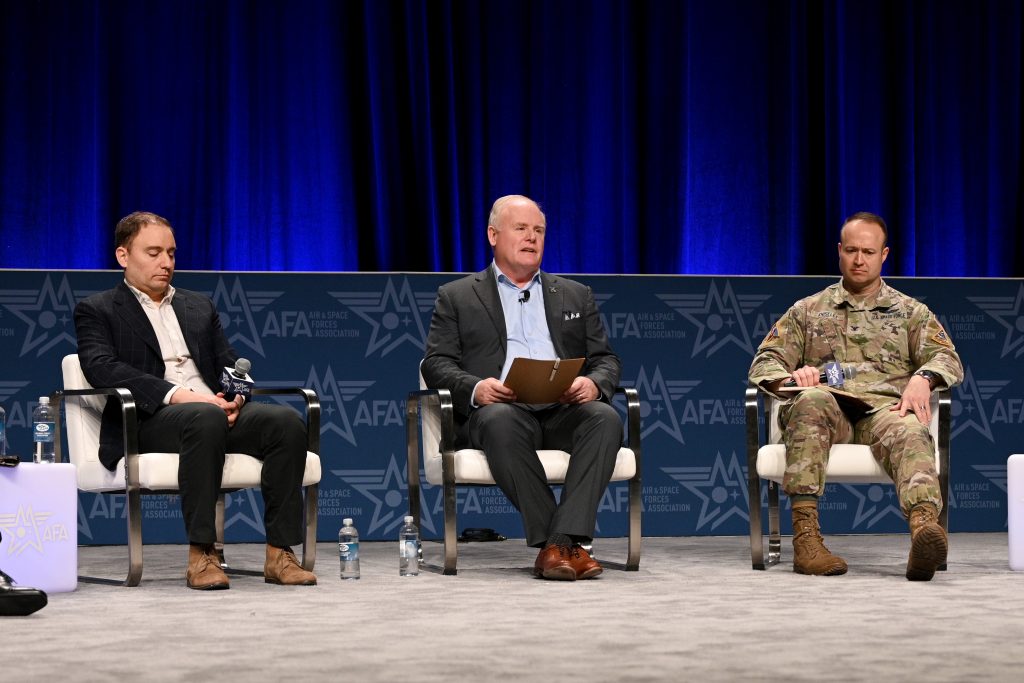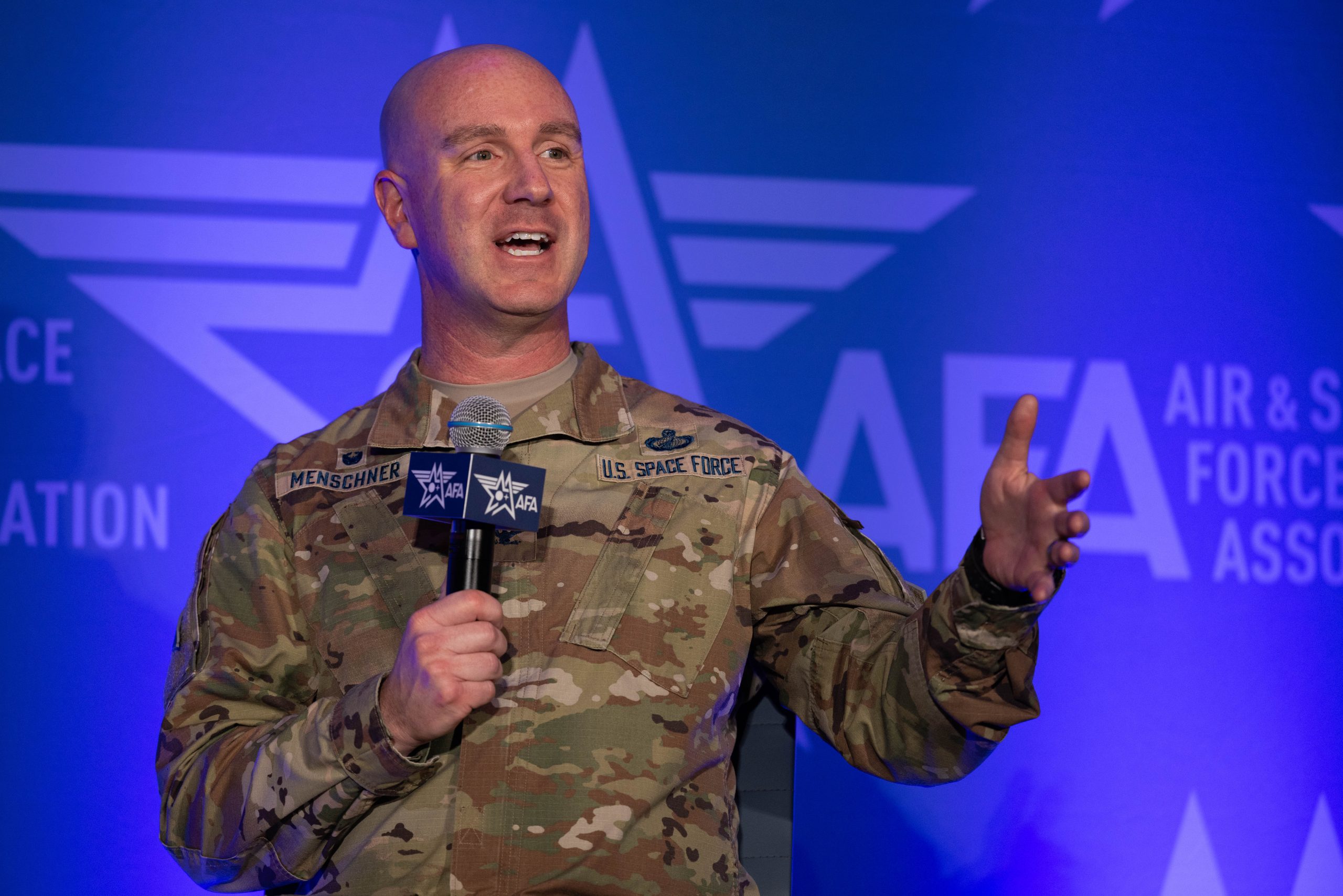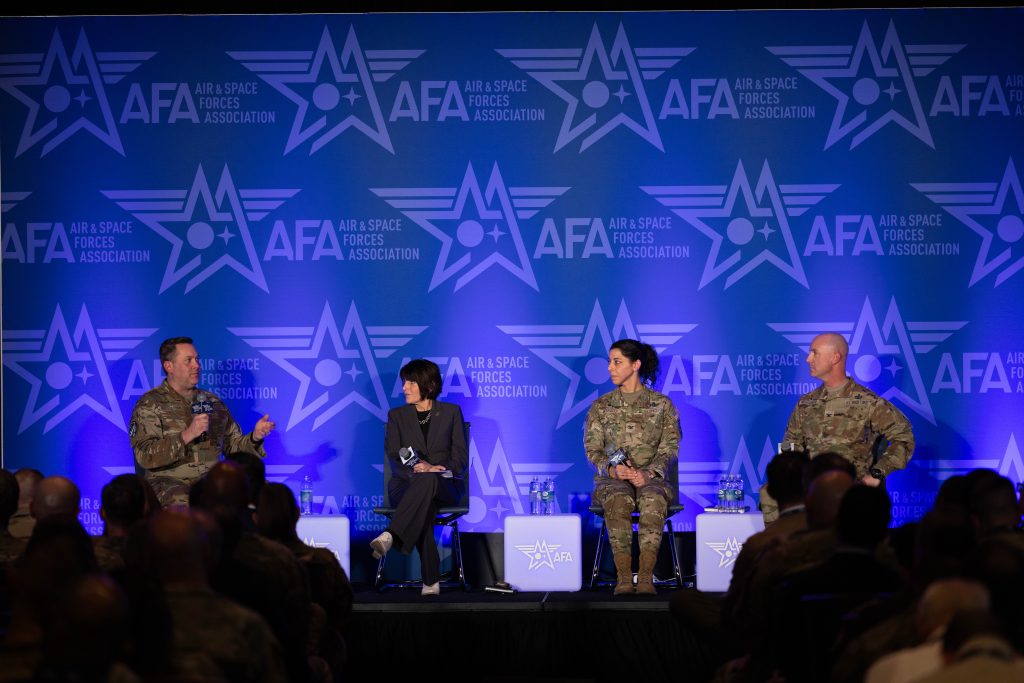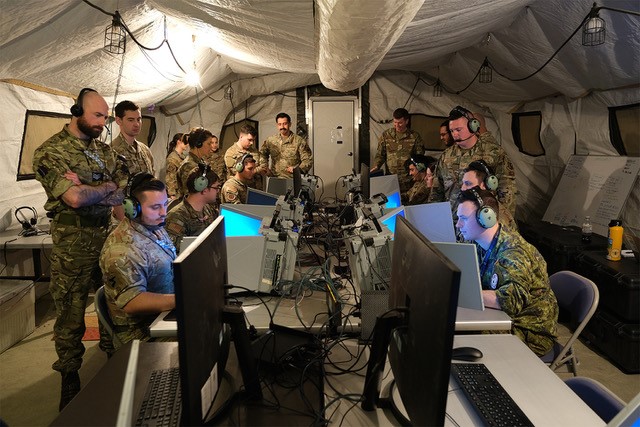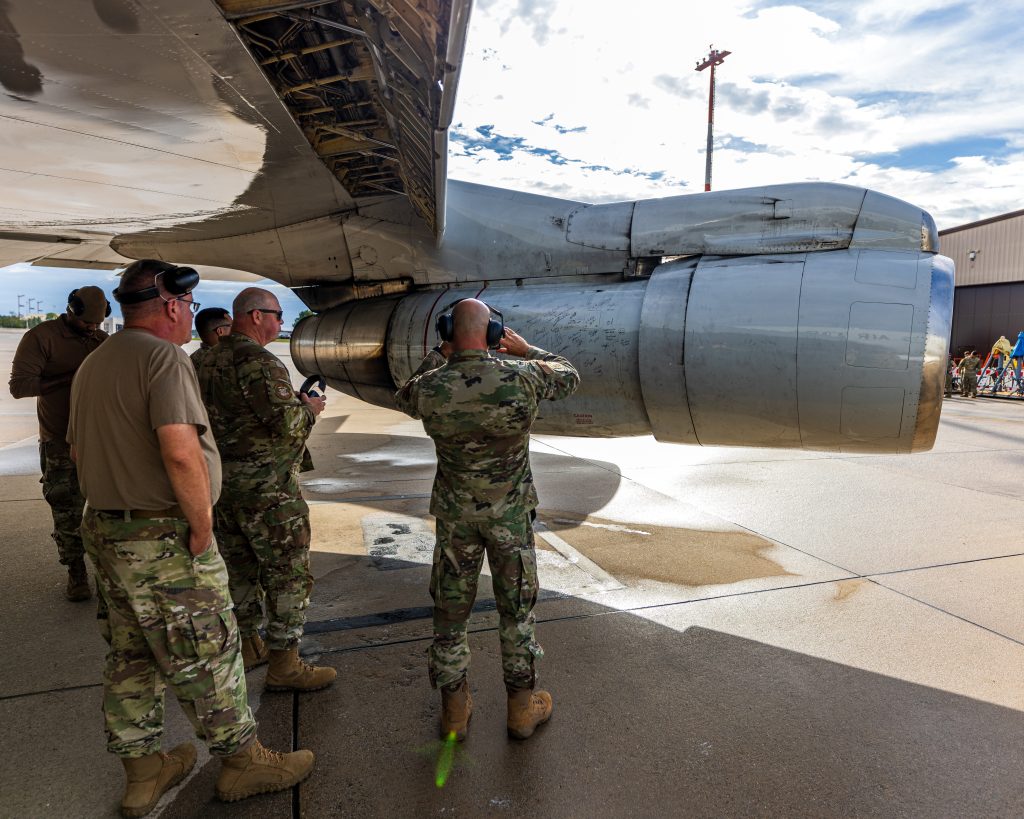Agreements on cybersecurity and other capabilities unique to the U.S. Air Force version of the E-7 Wedgetail aircraft are holding up negotiations on the program, according to Air Force officials and industry sources.
Cyber requirements have grown more stringent in the last seven months, service officials said, based on new assessments of China’s attempts to electronically penetrate and potentially either control or fool U.S. air systems.
“We are looking … at the same kinds of concerns” across Air Force systems, an official said. Given the centrality of the E-7 to battle management, “we have to get this right,” he said.
In a Feb. 12 press conference at the AFA Warfare Symposium in Aurora, Colo., Air Force Secretary Frank Kendall said the service is “having a hard time … getting a price agreement with Boeing” on the first two rapid prototype/demonstration examples of the E-7, which will succeed the E-3 Sentry as the service’s airborne battle management and serve as a bridge to a space-based air and ground moving target indication system. “We’re still in negotiations,” he said.
While no service officials suggested that the slowdown in talks could unravel the program, “other options are out there,” said one, “and you have to keep in mind that this is not the ultimate end-state we’re looking for, and it’s possible we could migrate to [a space-based] system sooner than we expect.” Another airborne system—like the Northrop Grumman E-2D Hawkeye—was evaluated by USAF and is not a likely alternative, he said.
Kendall told reporters the Air Force has had to rethink some of its strategies because of China’s development of stealth aircraft and long-range missiles that can target critical nodes like tankers and airborne battle management/command and control aircraft.
A year ago, Boeing received a sole-source undefinitized contract for up to $1.2 billion to develop the E-7 for the Air Force, with the ultimate goal of delivering 26 aircraft between fiscal year 2027 and 2032. Senior service officials have since said that the E-7 will be similar to those operated by Australia and the U.K., but with significant differences unique to what the Air Force needs the aircraft to do. An Air Force official told Air & Space Forces Magazine that “the trick is to add the specific capabilities we need without disturbing … interoperability” with allied operators.
Air Force acquisition executive Andrew Hunter told reporters at the symposium last week that “it’s not surprising” that Boeing is being extra careful in what it agrees to, since “they’ve gotten into some contracts in the past [where] it’s apparent that as they were bidding those, there was key information they were lacking.”
Boeing has absorbed more than $7 billion in losses on the fixed-price KC-46 tanker and T-7 trainer contracts, and company president and chief executive officer David Calhoun has said in earnings calls over the last year that Boeing will be far more disciplined and less aggressive in its future bidding strategies.
“They’re trying to do their homework and not bid” if they don’t “understand the full scope of the work that they’re going to be expected to perform,” Hunter said of Boeing.
He emphasized that the negotiations underway affect “the prototype aircraft,” which the Air Force would like to “seamlessly transition into a production program under the major capability acquisition pathway.”
The negotiation challenges stem from “optimizing [the E-7] for the Air Force mission set,” Hunter said.
“A lot of it was the need for some non-recurring engineering, or the development work that was above and beyond what we anticipated, when we scoped the E-7 program,” he explained. “And so the big surprise there was the unexpected amount and degree of non-recurring engineering,” even though the Air Force version “was very, very close to what the U.K. is currently [buying] from Boeing.”
Air Force officials said the “big surprise” Hunter referred to was a near-doubling of the non-recurring engineering element of the contract, and service officials said later this unexpected increase is the crux of the extended negotiations.
Hunter added that “we’re trying to get them to…understand the specificity of what’s kind of implied on the Boeing proposal.” The discussions also focus on what is “truly essential,” and whether all the desired capability is needed at the outset or could be deferred, Hunter said.
“We’ve narrowed [it] … down to a smaller, discrete set of issues to go work with Boeing on,” he said.
An award for the second prototype was expected early this year, and a program go-ahead was anticipated by the end of 2024.
“It would be nice to be able to turn the wheel a little faster when it comes to the bid proposal process,” Hunter said. “If we can turn the crank a little faster, I think we can actually help them do a better job with their proposals.”
The Air Force has characterized the E-7 acquisition as “urgent,” given that its 1970s-vintage E-3s are suffering from technological obsolescence, “vanishing vendor” syndrome, and extremely low mission capable rates. As few as one in five E-3s have been ready for action in recent years.
The E-7 is built by Boeing in its facilities around Seattle, Wash., and is based on a modernized 737 airframe. Northrop Grumman builds the “Wedgetail” radar itself, at its plant in Linthicum, Md. The Wedgetail itself is an electronically-scanned array radar with greater range, sensitivity and reliability than the analog “rotodomes” on E-3s.
